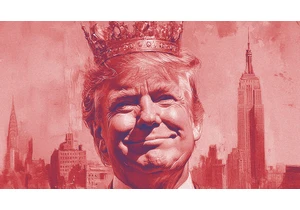Ahead of Super Bowl Sunday, online privacy groups Fight for the Future and the Algorithmic Justice League are reiterating a call for the NFL to put an end to the use of facial recognition in football stadiums, where the groups say the technology is used to authenticate employees, vendors, and authorized media.
“That means that anyone who is going into a stadium to work on any football game has to go through a facial recognition system just in order to get to their job, which is a complete invasion of people’s privacy,” says Caitlin Seeley George, campaigns and managing director at Fight for the Future.
The group has launched a petition demanding the NFL put an end to worker facial recognition. The technology isn’t specifically being used to target fans at the Super Bowl, which will be hosted at the Caesars Superdome in New Orleans, but Seeley George warns it’s possible that fans’ images may be captured unintentionally by camera systems. Other NFL stadiums have implemented programs to let people use facial recognition for ticketing and concessions purchases.
The NFL didn’t respond to a request for comment from Fast Company.
A risk with facial recognition, Seeley George says, is that biometric databases can be hacked, and the data within can be potentially used to impersonate people to other facial recognition systems, similar to how stolen passwords or credit card numbers can be used to access accounts or funds. But unlike passwords and account numbers, she says, it’s more or less impossible to change compromised credentials if they’re based on biometrics.
“People aren’t going to be able to replace their face if the data from these systems is hacked or stolen, and we’ve seen that there’s no way that these databases can be secured to protect against that,” she says.
Even voluntary use of facial recognition to buy food from vendors has the potential to do more harm than good, she says.
The facial recognition policy has also faced pushback from the Las Vegas Police union, who didn’t want images of officers working at Raiders games entered into the system, citing privacy concerns. And groups including Fight for the Future have protested facial recognition deployments at other sports stadiums as well, including Citi Field, home to the New York Mets.
“I think we will continue to organize events where fans can come out and rally against the use of this technology,” says Seeley George.
Fight for the Future has also backed legislation to restrict facial recognition technology and encouraged people to opt out of it when possible, which she says might create economic incentives to limit its use.
The technology has also been deployed by the parent company of Madison Square Garden and Radio City Music Hall in New York, where it was even reportedly used to deny entry to lawyers working for a law firm involved in a dispute against the company.
Even when Super Bowl fans leave the Superdome this weekend, they may not be able to escape the use of facial recognition technology, Seeley George says. The New Orleans City Council in 2022 repealed an ordinance curbing police use of facial recognition, and Politico reported in 2023 that the system “has low effectiveness, is rarely associated with arrests and is disproportionately used on Black people.”
City, state, and federal officials have heavily beefed up security in the city ahead of the Super Bowl, particularly in light of the deadly terrorist attack in the city on New Year’s, with measures in place reported to include overhead drones capturing real-time images of crowds. The AI company Dataminr will also reportedly be monitoring social media and public traffic cameras to detect signs of disturbances.
Ak chcete pridať komentár, prihláste sa
Ostatné príspevky v tejto skupine

The official White House social media account is under fire for posts that resemble something typically found on the internet forum 4chan.
A post shared on February 14, styled like a Val

The prospect of banning the sale of so-called


The day after the Super Bowl, ZapperBox quietly raised the price on Amazon of its over-the-air DVR.
ZapperBox offers one of the best means of recording local channels from an antenna, an

Within Walmart, employees known as merchants make decisions about which products the company carries online and in stores, as well as pricing for those items.
Naturally, the job involves

With TikTok’s future in the U.S. still uncertain, Substack is doubling dow

